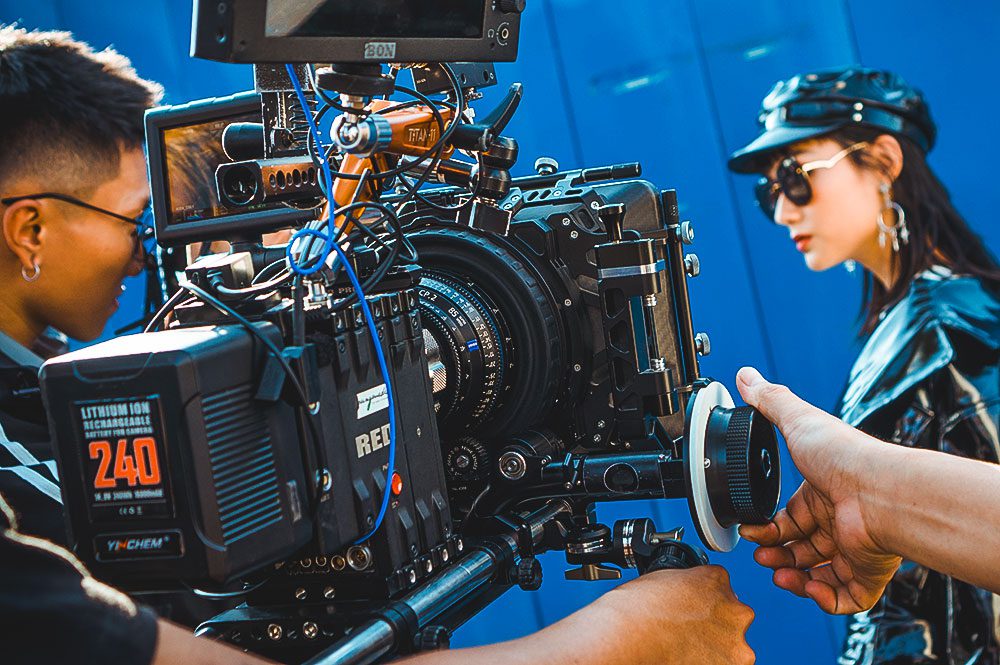How to fund your next film (top tip—it’s all in the research)

It’s showtime. You’re ready to make a movie.
You’ve not only bagged the ideal location, but your script is awesome. And you’ve got an eager and talented crew waiting to join the action.
But before production can begin, there’s an important factor to finalize: funding.
Getting funding for your film can seem a little complicated at first. Especially if it’s your first film production.
But it’s crucial. Your production team will need funding to pay for every step of the filming process.
Chances are, you’re worrying about where that funding is going to come from. You may feel like there’s a shortage of cash investment in the film production industry, but there are a whole host of incentives and financing options to aid you in your venture.
You just need to know where to look.
So let’s get down to it. We’ve put together our top tips on all the ways you can get film funding—and get your show on the road.
Let’s take a closer look at the incentives that can help you along the way.
- Grants
Film grants can come in the form of funds, services, or equipment provided by an external organization without expectation of repayment. When it comes to indie films, there are many viable grant options out there. And many are category-specific.
First-time filmmaker grants. Television grants. Documentary filmmaker grants. Grants based on location. Women-in-film grants. And the list doesn’t end there.
Plus, there are also grants for every stage of the film process—development, production, post-production and distribution.
Which category do you fall into?
Time for some research.
- Tax incentives
Tax incentives are readily available across the US and Canada. Many states use them to incentivize economic activity or to encourage productions to take advantage of an area during its offseason.
And the best thing about incentives? You don’t have to pay the money back.
Tax credits…deductions…rebates. Many production teams use this handy help for things like funding a small portion of a film. Or housing their crew at a certain location.
Film incentives and the requirements your production must meet to take advantage of them vary by state. Check out this full list of states that offer tax incentives.
- Private investors
Private investors can assist with film financing in two main ways. The first is equity financing, in which the investor provides money in return for a stake in the film. The second is debt financing, in which an investor provides a loan to the filmmaker or production company.
Do your research—and make sure you’re prepared. That’s the best advice we can give you when finding a private investor.
Make sure you’ve got a heartfelt pitch and a solid plan. You want to bowl your investor over so they can’t resist.
The chances are the investor you’re pitching to has a big love for film. So set out to impress—and inspire them to get involved.
Here’s a list of credible indie-film investors who span the world.
- Crowdfunding
If you’re looking to fund only a small portion of your film, crowdfunding could be a good route to take.
How does it work? You share your show-stopping pitch or trailer with the general public—and ask them to make individual donations. Small donations can go a long way when combined.
Check out these crowdfunding platform favorites to get you started.
- Maximize free production resources
Make use of pre-used production material providers, such as Eco Set—ideal if you’re close to L.A. Companies like Ecoset provide Zero Waste resources to creative industries.
And what’s more—you can even get some materials for free. Such as sets and props, art and craft materials, lighting expendables.
- Crew up with like-minded students from film school
And of course, there’s strength in numbers. Crew up with fellow students from film school. You can all pool together to help get your film off the ground.
If you’re fresh from school, you’re more than likely on a budget. So you could always film a skeleton crew to keep costs low.
There are the essential roles that you can’t do without. The list looks a bit like this:
- Producer
- Director
- DP
- 1st AD
- 1st AC
- Gaffer
- Sound Mixer
- Production designer
- Hair/makeup artist
- PAs
But once you have that solid crew foundation, you can get a little bit creative along the way.
Research (and research some more)
Phew. That’s a lot of info. But honestly, making the right choices all starts with research.
Understand what tax incentives and grants are best suited to you. Prepare and perfect your pitch for private investors. And make use of free production resources in your area.
Good luck all!
Love,
The Los Angeles Film School
